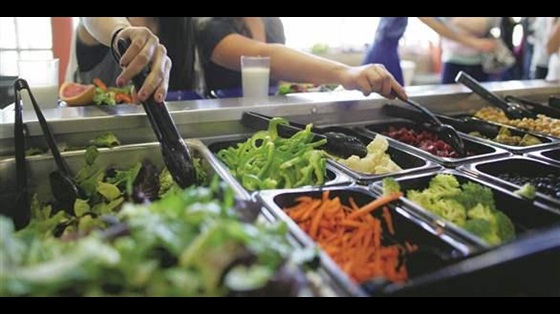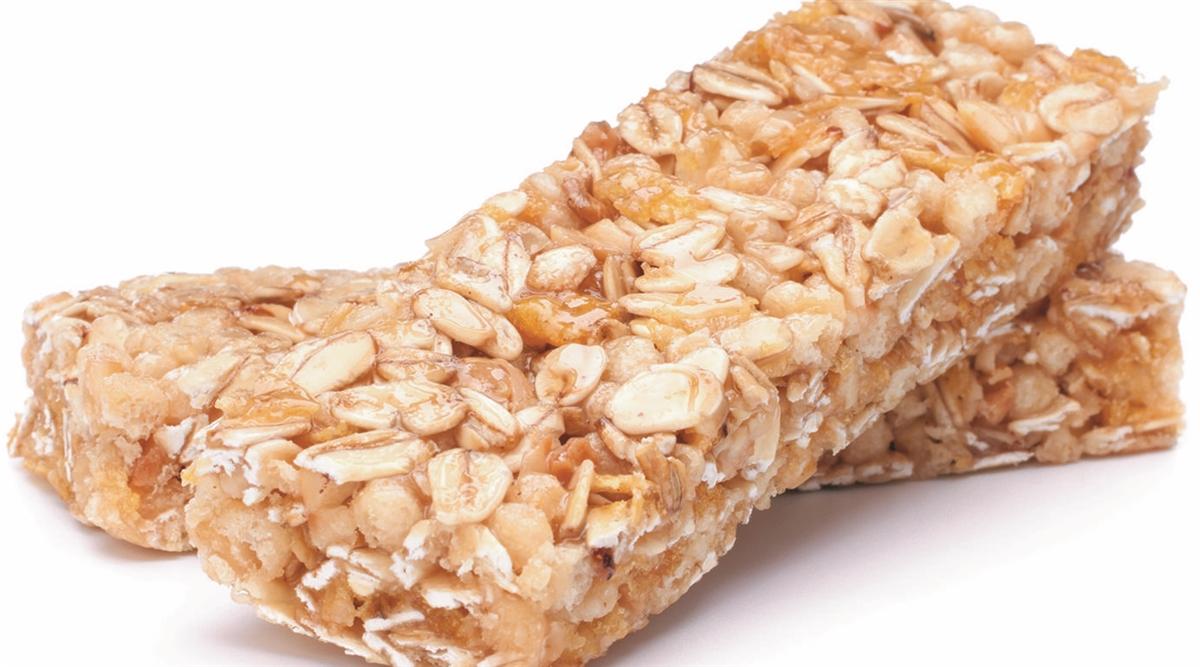Elementary Nutrition
NUTRACEUTICALS
When it comes to children’s nutrition, the top-of-mind concerns of parents include childhood obesity, immunity, and healthy physical and mental development. Parents also want less sugar and sodium in their kids’ foods and beverages, no preservatives, and more natural and clean ingredients. Kids ultimately want their food to taste good.
It’s no secret that parents play a role in childhood nutrition, and they influence their children’s eating decisions as they grow into teenagers and adults. Another influence for many children is their school lunch program. During the school year, many families rely on school nutrition programs to provide wholesome lunches. Nearly 100,000 schools/ institutions serve school lunches to 29.8 million students each day through the National School Lunch Program (NSLP), according to the School Nutrition Association (SNA), which cites the U.S. Dept. of Agriculture’s (USDA) FY 2018 preliminary data. This provides an opportunity to promote healthy eating habits and choices as well as overall well-being in children.
The NSLP offers students fruits, vegetables, whole grains, lean protein, and fat-free or low-fat milk with every school lunch. Updated federal nutrition standards also ensure these meals are within age-appropriate calorie levels and limit both unhealthy fats and sodium. According to SNA, children receiving school lunches consume fewer empty calories and more milk, fruit, vegetables, and fiber than their peers. They are also more likely to have appropriate intakes of calcium, vitamin A, and zinc. School lunches often contain fewer calories, fat, saturated fat, and sugar than lunches brought from home.
In 2010, the Healthy, Hunger-Free Kids Act called for reduced calorie limits, cut sodium and trans fats, and added more fruits, vegetables, and whole grains to the menus in school lunch programs. Vegetable choices must include weekly offerings of legumes, dark greens, and red/ orange vegetables. Every school breakfast must offer students a full cup of fruits or vegetables. Students are required to take at least one halfcup serving of fruits or vegetables with every school breakfast and lunch.
When trying to reduce the amounts of sugar and sodium, chefs and food companies look at other ingredient options. For example, Cargill Salt reduced sodium in pizza without impacting taste and texture using its Potassium Pro Salt/ Potassium Chloride Granulated Blend 50/50 in the pizza sauce and Potassium Pro Ultra Fine Potassium Chloride in the crust. After a full evaluation, Cargill determined that Potassium Pro Salt/Potassium Chloride Granulated Blend 50/50 could reduce sodium in the sauce by up to 28% and Potassium Pro Ultra Fine Potassium Chloride could reduce sodium in the crust by up to 25%.
For schools working to make menus healthier, the Chef Ann Foundation (CAF) is a resource to turn to. CAF is an organization dedicated to promoting scratch-cooking in schools across the country. Founded in 2009 by Ann Cooper, an internationally recognized author, chef, and advocate of healthy food for all children, the organization provides school communities with the tools, training, resources, and funding that enables them to create healthier food and redefine lunchroom environments. For example, Salad Bars to Schools is a grant program in partnership with the Whole Kids Foundation, United Fresh Start Foundation, and the National Fruit and Vegetable Alliance that helps schools serve fresh fruits and vegetables by implementing salad bars as part of their daily meal program. Another tool is The Lunch Box, CAF’s online resource with free step-by-step guides and recipes to help schools improve their food programs and transition to scratch-cooking in an easy and accessible way.
CAF in November 2019 hosted its annual Real School Food Challenge, where competitors were asked to create dishes based on USDA guidelines that cost about $1.25 per serving, the average budget for a school lunch in the United States. Event attendees judged the food based on taste, presentation, and scalability. Kristy Lewis, founder/CEO of Quinn Snacks, won the competition for her school lunch creation of Italian meatballs with herbed polenta and maple-braised carrots. The other three competitors were T. J. McIntyre, CEO of Bobo’s Oat Bars, who developed a Vietnamese pork noodle bowl; Koel Thomae, cofounder of Noosa Yoghurt,who formulated a chicken burrito bowl; and Kim and Jake Rosenbarger, founders of Kim and Jake’s Gluten Free, who created a New Orleans red beans and rice with turkey andouille sausage and brussels sprouts meal.
With this focus on helping kids eat more nutritious and delicious lunches, here is a look at some of the other nutritional components and ingredients that can create healthier school meals for kids.
Whole Grains
Whole grains are a nutritious source of dietary fiber, essential fatty acids, protein, vitamins, and minerals. Studies have linked whole grain consumption with weight management, heart health, and less inflammation. Damsgaard et al. (2017), for example, demonstrated that whole grains and fiber were linked with lower levels of serum insulin—indicating healthier blood sugar management—in a study of more than 700 children. The researchers also concluded that oats were linked with less body fat and lower systolic blood pressure. A study by Dong et al. (2015) suggested that whole grains may be important for children struggling with maintaining a healthy weight. The researchers analyzed the three-day food records and body mass index of more than 4,600 children at ages 7, 10, and 13. The results showed that consuming potato chips was most closely linked with excess weight gain in the children, along with butter and margarine, battered or breaded fish, processed meats, french fries and roasted potatoes, desserts, and sweets. Whole grains, however, was the only food group that was consistently linked with weight loss.
Updated regulations for school meals mandating that at least half of all grains offered in school lunches must be whole grains took effect in July 2019. The SNA’s 2019 Trends Report revealed that more than 90% of responding school districts will exceed these federal whole grain requirements, with more than 70% reporting that about three-quarters or more of the grains offered will be whole grains.
Ardent Mills has partnered with SNA to provide K-12 schools with Ultragrain, a whole grain–rich flour. At the 2019 SNA Annual National Conference, the company developed several whole grain options that schools could add to their menus. A strawberry bar was formulated with Ultragrain Biscuits and More Mix, which contains whole wheat flour. Mac and cheese and a vegetable pasta salad were made with Ultragrain Pasta (now sold by Armour Specialty Marketing), a whole grain pasta that is lighter in color than traditional whole wheat pasta.
Cheese quesadillas and pretzel bites were made with Ultragrain Whole Wheat Flour, which is milled with specially selected white wheat that is naturally sweeter and lighter in color than traditional red whole wheat. Ardent Mills also featured Ultragrain All Purpose Flour Blend T-2, a blend of 55% Ultragrain and 45% enriched white flour.
Protein
Most school-aged kids need 4 to 6.5 ounces of protein each day. Traditionally, lean protein sources have included fish, chicken, and lean meat. But the rising interest in plant proteins has affected school lunches as well. Chickpeas, tofu, and beans can be added to menus as alternative protein sources. To support schools in offering more plant-based, scratch-cooked options, CAF developed new recipes that fit USDA school meal requirements and have been tested in school kitchens and taste-tested by students. Plant-based proteins like beans, tofu, soy yogurt, and tempeh are all creditable in the USDA meal pattern and are nutritious and delicious additions to school food menus. Examples of some of the recipes are quinoa burgers and Korean bibimbap bowls with tofu and brown rice.
Dairy
Dairy’s benefits for children range from being a source of calcium for bone development and health, protein for muscle maintenance, and vitamin D. Three servings of low-fat and fat-free dairy foods like milk, cheese, and yogurt are recommended for those 9 years and older. Through the NSLP, schools must offer students at least two different options of fluid milk. Schools may offer unflavored or flavored fat-free milk and unflavored or flavored low-fat (1%) milk as part of the reimbursable meal for children in grades K-12. If schools offer flavored milk, unflavored milk must also be available at each meal service.
Whey and milk proteins are a high quality, complete source of essential and nonessential amino acids naturally found in dairy foods. Whey proteins are a source of branched-chain amino acids, including leucine, which has been shown to stimulate muscle protein synthesis.
When it comes to sodium reduction, the U.S. Dairy Export Council has shown that dairy permeate (also called dairy product solids, deproteinized whey, or modified whey) can be used to reduce sodium content in some foods. Dairy permeate is a mineral-packed food ingredient derived from the production of whey protein concentrate, whey protein isolate, ultrafiltered milk, milk protein concentrate, and milk protein isolate. The salt-enhancing characteristics of dairy permeate make it ideal to reduce the sodium content, as it provides natural salty characteristics to foods. In general, it can be an option for food applications where lactose or whey are used, including baked goods, soups, confectionery, meats, dry mixes, dairy foods, and beverages.
Immune Health
Immune health is a top parental concern, especially during cold and flu season. Children are in proximity in a school setting, so germs and illnesses are easily spread. While healthy diets play a role in maintaining healthy immune systems, ingredients like probiotics and prebiotics can help with strengthening microbiomes and immune systems in children.
Soldi et al. (2019) demonstrated that prebiotic chicory root fiber kept the level of bifidobacteria higher and more stable, even during antibiotic treatment, in children aged 3–6. The study examined the effects of supplementing the diets of 258 healthy children with 6 grams of chicory root fiber (Orafti Inulin and Orafti Oligofructose from BENEO) or a control (maltodextrin) for 24 weeks. The findings showed that regular consumption of prebiotic chicory root fiber kept the level of beneficial bifidobacteria higher and more stable, reducing the antibiotic-induced disturbances of the microbiome composition. In general, the children undergoing antibiotic treatment showed a reduction of microbiota, including bifidobacteria. However, those children who also received the prebiotic supplementation demonstrated a significantly higher presence of bifidobacteria versus those who received the control. The results built on a previous study that found that children aged 3–6 who took prebiotic chicory root fiber had reduced febrile and sinusitis episodes.
GanedenBC30 (Bacillus coagulans GBI-30, 6086) from Kerry is a patented, U.S. Food and Drug Administration GRAS probiotic ingredient that has been shown to provide digestive health, immune health, and protein utilization benefits. It is a spore-former, which makes it highly stable and allows it to remain viable throughout most manufacturing processes and the low pH of stomach acid.
Anaya-Loyola et al. (2019) showed that GanedenBC30 had a beneficial effect on gastrointestinal symptoms and upper respiratory tract infection symptoms in children. For the study, 80 healthy children received a flavored water that contained either GanedenBC30 (1 billion CFU) or a placebo daily for 12 weeks. The results found that supplementation with GanedenBC30 significantly reduced the incidence of flatulence and suggested a positive effect on stool consistency. It also found that the probiotics significantly decreased the incidence of upper respiratory tract infection symptoms, including nasal congestion, bloody nasal mucus, itchy nose, and hoarseness, and the duration of hoarseness, headache, red eyes, and fatigue.
Next month’s Nutraceuticals section will discuss formulating foods with ingredients that may help improve health as we age.
R E F E R E N C E S
Anaya-Loyola, M. A., J. A. Enciso-Moreno, J. E. López-Ramos, et al. 2019. “Bacillus coagulans GBI-30, 6068 Decreases Upper Respiratory and Gastrointestinal Tract Symptoms in Healthy Mexican Scholar-aged Children by Modulating Immune-related Proteins.” Food Research International. 25: 108567.
Damsgaard, C. T., A. Biltoft-Jensen, I. Tetens, et al. 2017. “Whole-Grain Intake, Reflected by Dietary Records and Biomarkers, Is Inversely Associated with Circulating Insulin and Other Cardiometabolic Markers in 8- to 11-Year-Old Children.” J. Nutr. 147(5): 816–824.
Dong, D., M. Bilger, R. M. van Dam, et al. 2015. “Consumption of Specific Foods and Beverages and Excess Weight Gain Among Children and Adolescents.” Health Affairs. 34(11): 1940–1948.
Soldi, S., S. Vasileiadis, S. Lohner, et al. 2019. “Prebiotic Supplementation Over a Cold Season and During Antibiotic Treatment Specifically Modulates the Gut Microbiota Composition of 3–6 Year-old Children.” Benef. Microbes. 10(3): 253–263.








